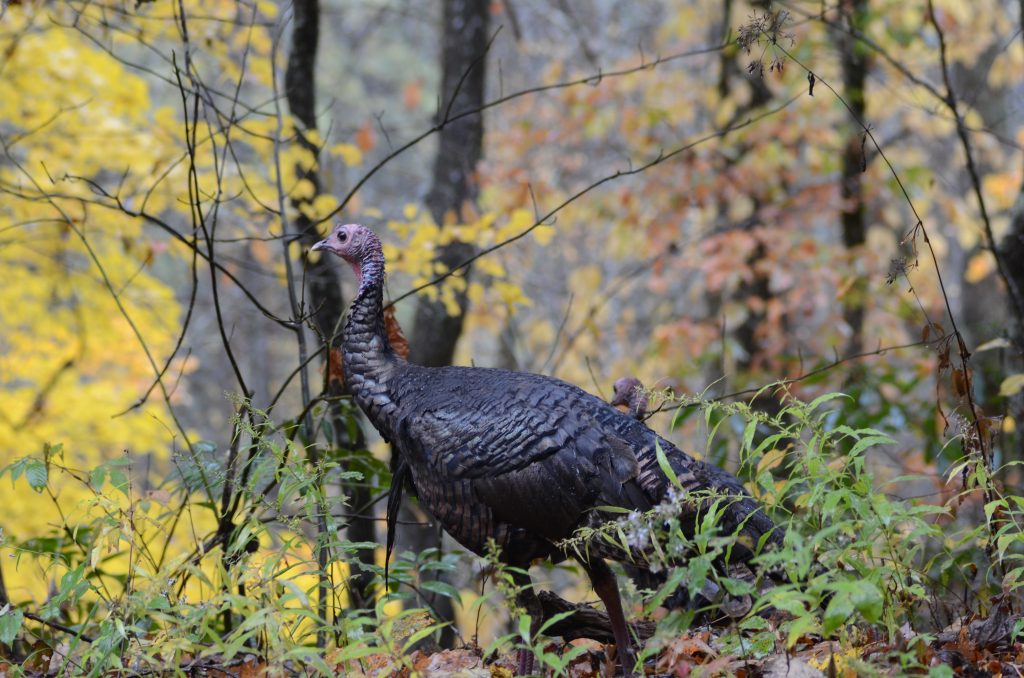Many of the crops you plant for spring turkey food plots will also be utilized by deer and turkeys the upcoming fall. For the best information on what crops to plant for turkeys – when and why – “Great Days Outdoors” has interviewed Tim Wood, the general manager of the Central Alabama Farmers Cooperative in Selma. Wood, on the Alabama Wildlife Federation’s Board of Directors, is a strong supporter of wildlife conservation, habitat enhancement and growing more turkeys and deer each year.
Great Days Outdoors: December is when many hunting clubs and landowners consider what crops they’ll plant for spring and fall turkey hunting and the upcoming deer season. What crops do you recommend to meet these objectives?
Tim Wood: Some of the crops you’ve planted primarily for deer this past fall will be used by turkeys in the spring, once those deer plantings mature. One of turkeys’ favorite foods for spring and fall is clover. If you’ve planted clover food plots for deer last fall, that same clover will help feed your turkeys during the spring and the fall of 2023, as well as continue to feed the deer. Clovers like crimson, Osceola, Ladino and red are beneficial, depending on your property’s type of soil.
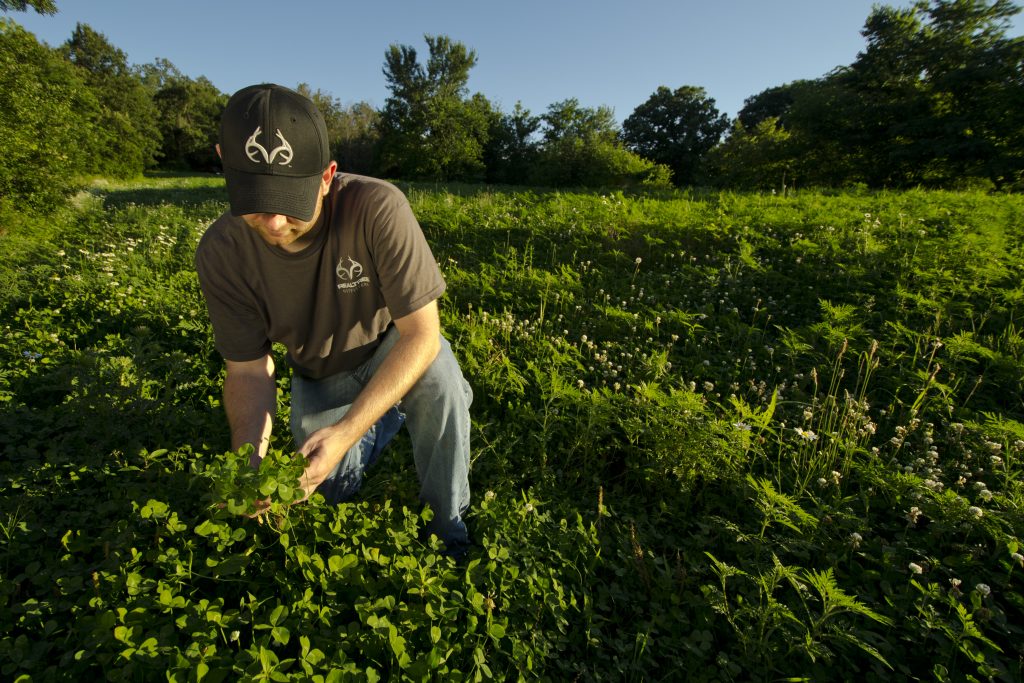
For instance, if your soil is composed of heavy clay, Osceola and Ladino clovers will do well. For sandy soils, I like crimson clover. However, I don’t recommend Yuchi Arrowleaf clover, although it produces plenty of growth and tonnage. Its stems become woody-like and thick. Turkeys don’t tend to pick and eat this clover as well as they do others. Turkeys like to feed on the fringes of green fields, not out in their middles. Yuchi clover is great for cattle farmers though because the cattle eat that clover and keep it from becoming too thick.
For wildlife, I’m not a major advocate of Arrowleaf clovers. If you mow this clover and keep it low to the ground, it can be a good food for wildlife, but that comes at the expense of having to do more maintenance. The other types of clover I’ve recommended require less maintenance.
GDO: What are some other benefits of planting clovers?
Wood: Clovers can be year-round food for wildlife – both deer and turkeys – and produce plenty of supplemental food. Clover also is a perennial and will return year after year, without your having to replant it. However, you must keep up with the fertility level of your soil by doing soil tests once or twice a year.
GDO: What’s the advantage of planting annual crops for turkeys as well as perennial crops?
Wood: Perennials require more management than annuals do, such as additional weed and grass control. Some people who plant perennial crops of clovers plow them up every year and replant, but that’s not necessary.
GDO: When should you spray clover patches to control the weeds and grasses that compete with the clover for water and nutrition in the soil? Also, how long should these clovers last?
Wood: Select Herbicide and Poast Herbicide are herbicides that work best on clover patches. I recommend you spray a herbicide in early March to kill all the grasses that invade your clover patches. Your clover will produce more, and the herbicide will encourage your clover to spread faster, reseed more and set great stolon groups (roots that grow under the ground on which clover spreads).
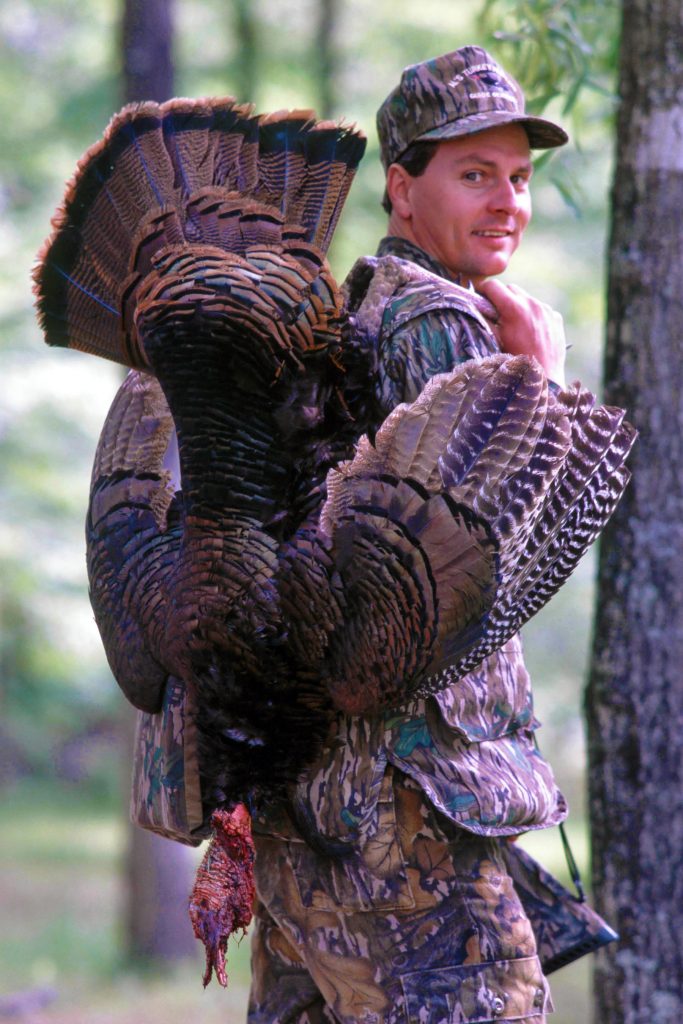
The more stolon growth, the more survivability your clover will have and a longer growing season. The Ladino clover has some of the best stolon growth, so it stays green longer into the summer. For a longer season to feed both turkeys and deer, I recommend planting perennials, because they produce more palatable food than the annuals do for turkeys and deer in the spring and the summer.
In my opinion, you can’t plant a better crop to feed turkeys in the spring and fall, as well as feed deer, than clover. I like any of the Ladino clovers. You can spray Select Herbicide in early March too, although that’s not necessary. If I spray Ladino clovers in the fall, I’ll spray in August or September to control the weeds. But I prefer to bush hog Ladino clovers in the early fall for both turkeys and deer to have the best results.
UTV and ATV sprayers are a great way to control weeds on your food plot. Read more about what you need to consider when choosing one and check out some of the best UTV/ATV sprayer options n this article.
GDO: How can someone learn the best information on what to plant for turkeys in the spring and in the fall, and what herbicides to use in a specific section of the state? Should you talk to people at your local Farmers Co-Op?
Wood: Yes, you should. However, if you want to do everything possible to increase the food and habitat on the land you’re managing for wildlife, I suggest you contact the Alabama Department of Conservation, the Alabama Wildlife Federation and/or the National Wild Turkey Federation.
Each of those organizations provides consulting wildlife biologists, free of charge, to recommend a course of action, including planting, fertilizing, liming and spraying herbicides for your food plots to benefit wildlife. They’ll recommend how to create the best nesting habitat for turkeys and poults and explain other things you can do to increase the habitat and the food for turkeys during the spring, summer and fall.
GDO: Earlier you mentioned that many of the crops planted for deer also will be productive for turkey food plots. Which crops are those?
Wood: If you plant cereal grains like oats, wheat and rye for deer, the turkeys can peck at these and get some nutrition when the crops head-out and start producing seeds. Turkeys will strip the mature seeds off the seed heads of each of these crops, producing a great amount of protein in the spring for them.
After the turkey poults have hatched, these crops’ stems and stalks provide protection from avian predators as the poults bug and move through these cereal grains. However, if these crops are planted too thickly, the vegetation will be difficult for the poults to utilize. Any of the grazing wheats or grazing oats will produce what you need to help mature turkeys and poults.
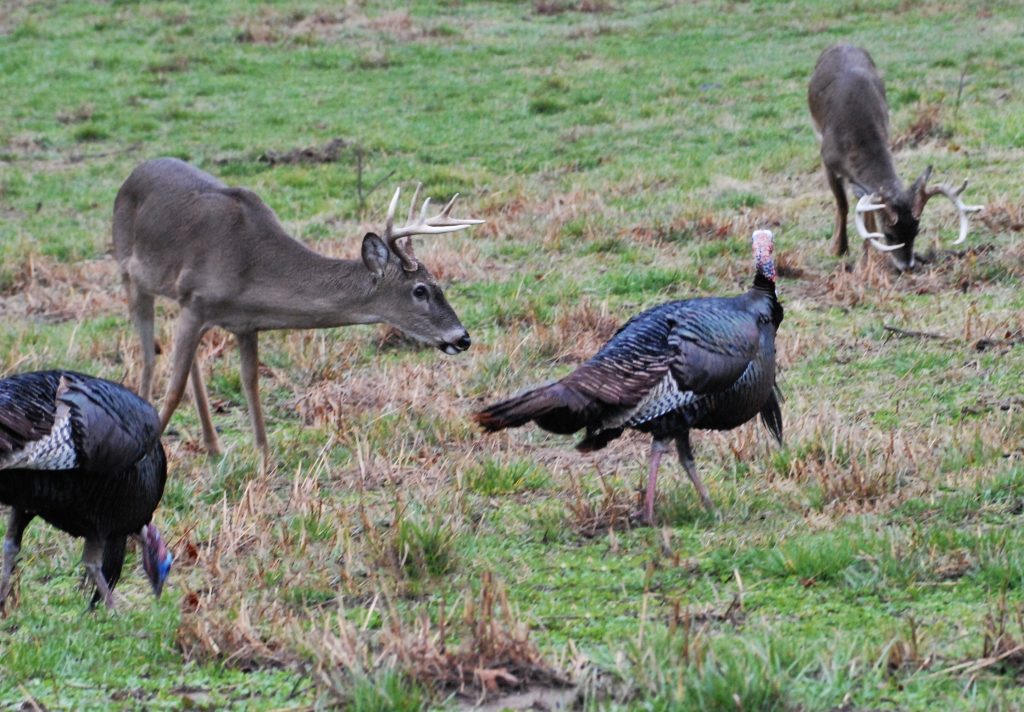
Grain sorghum will mature in the early fall. If you don’t harvest that grain sorghum, the turkeys can feed on it during the winter and the spring. People who plant corn and leave it standing without harvesting it will provide food for turkeys. The ground under the corn stalks is usually clean, making it suitable for poult habitat.
As the corn stalks fall down, if not harvested, turkeys can eat the corn and feed on it during the winter. Poults also can pick bugs under the corn after they hatch. One of the concerns however with planting corn is that it can produce Alphatoxins (toxic chemicals produced by some forms of fungus) that have caused issues with some turkey populations.
GDO: What other crops can be planted that will feed turkeys in the spring and the fall?
Wood: Many dove-hunting enthusiasts’ plant brown top millet and grain sorghum. If those crops are left standing in the field, and some of it is cut, not only will the doves feed on these plants, but also the turkeys during the fall and winter when the standing sorghum and/or millet falls over and puts seeds on the ground the turkeys can eat.
Soybeans left standing in the fields will feed turkeys too in the late fall and early winter. All the crops I’ve mentioned for planting for the fall turkey season need to be left standing throughout the winter to provide food for turkeys when the stems die and fall over, leaving the seeds accessible to the turkeys.
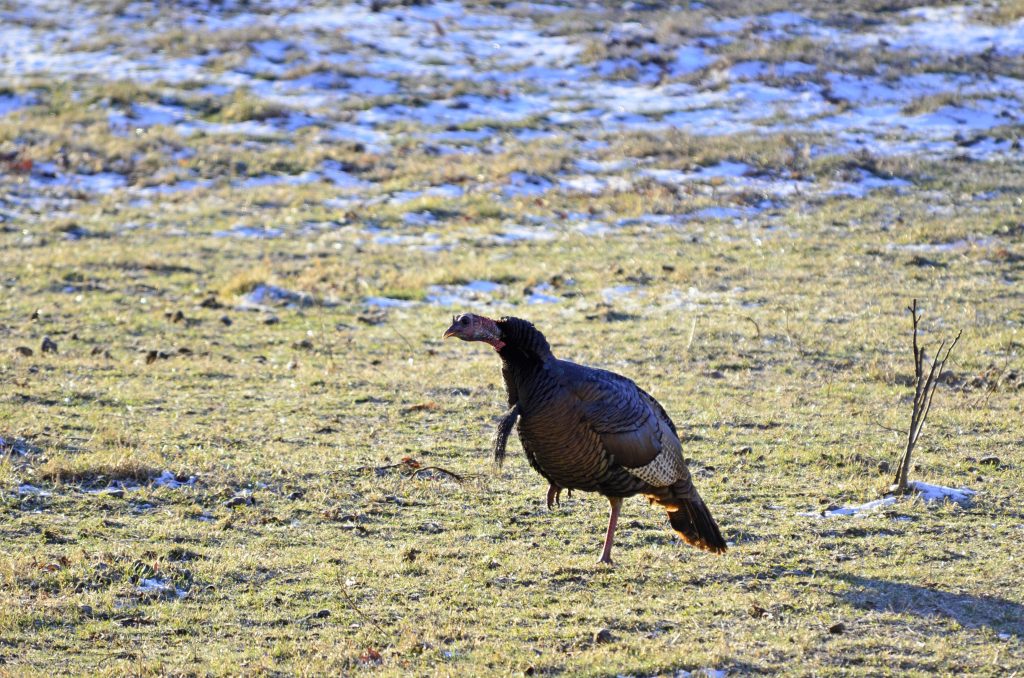
GDO: Is there anything else we can do to increase the food availability and the habitat for turkeys during the spring and fall seasons?
Wood: Once again, I’m convinced that having a consulting wildlife biologist who’s totally impartial to any particular type of planting come in and evaluate the property you have to hunt is very important. The wildlife biologist can recommend what’s best to do on your land, and what to plant and where to plant it to increase the numbers of turkeys.
A biologist also can suggest doing soil tests that will provide the information for liming, fertilizing and planting the crops to produce the most food and habitat for turkeys during the year.
Any place where the sun hits the ground, you can disc up that ground and sprinkle 13-13-13 fertilizer on it to enable the native seeds stored-up in the soil to germinate and produce additional wildlife food for turkeys and deer. If your property is being managed for timber, the loading decks that are used to load timber when it’s cut are often productive places to create this type of natural native food for turkeys and deer too.
The Ideal Turkey Food Plots With Tim Wood
In my opinion, the perfect food plot for fall and winter is to disc-up the ground just past the drip line of the trees on the edges of your green field, let native grasses grow up there to provide habitat for turkeys to nest in and to raise their poults and have a standing crop of cereal grains or corn for protection from avian predators like hawks and owls. Later crops, like clover and/or others, also will help feed the deer. As turkeys move further out into your food plot, the clover there will be free of weeds. Both mature turkeys and poults can peck on the clover and eat it. Here’s a schedule of how to have the ideal food plot.
* Have a wildlife biologist evaluate your property. Each green field has a different personality. Perhaps it’s wet with big hardwoods surrounding it; close to agricultural fields; or, located on the edge of a mountain and subject to drought.
* Inform the biologist of the primary use of the property – to raise agriculture, timber and/or wildlife. A biologist may recommend you control burn 20 acres at a time in various sections of your land to clean-up the forest floor’s litter and allow more sunlight to reach the forest floor to stimulate the growth of native grasses and plants that turkeys and deer will eat.
* Plow and disc the edges of green fields, away from the dripline of the trees, to encourage native grasses to grow and provide nesting areas for hens and protection for young poults. Since trees will suck-out nutrients and moisture from your soil, I like a 20-foot buffer zone from the field’s edges to the trees’ dripline.
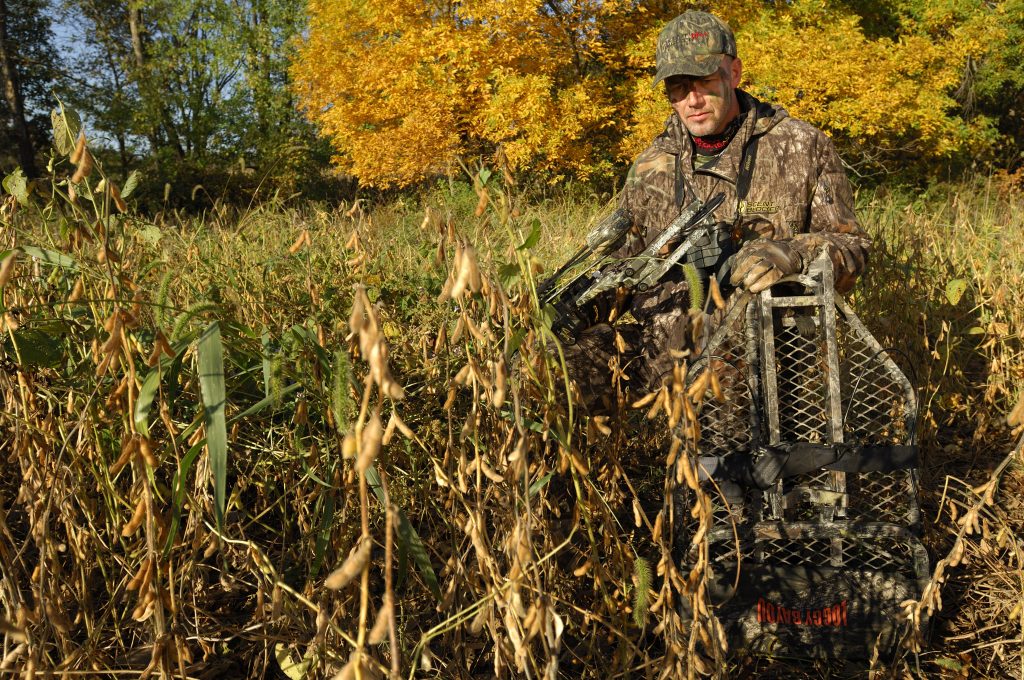
* Plant grain, sorghum, wheat and/or oats for two or three rows next to the buffer zone, and leave this crop standing to fold over and make grain available for the poults and hens.
* Plant green fields, including: winter food plots for deer; clover for year-round food plots for deer and turkeys; and spring grains like browntop millet, corn and milo. Wild game likes diversity of habitat.
* Remove predators like skunks, coyotes, foxes, raccoons, wild pigs, possums and bobcats that will eat turkey eggs (skunks), poults and sometimes fawns by trapping and harvesting these animals each year.
* Realize that although chufas are a great crop for turkey food plots, chufas attract wild hogs and raccoons that will destroy the chufas.
UTV and ATV seed spreaders are a great way to spread seed on your food plot. Read more about what you need to consider when choosing one and check out some of the best UTV/ATV spreader options n this article.

